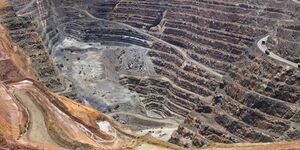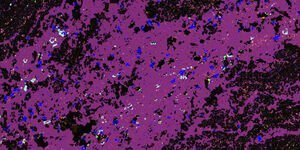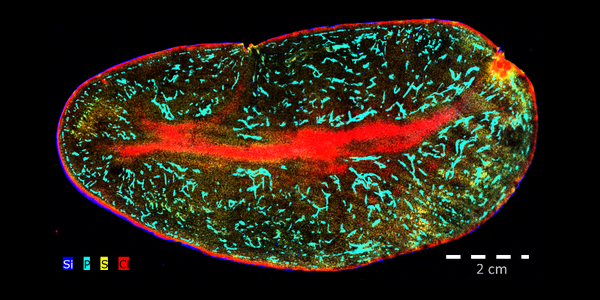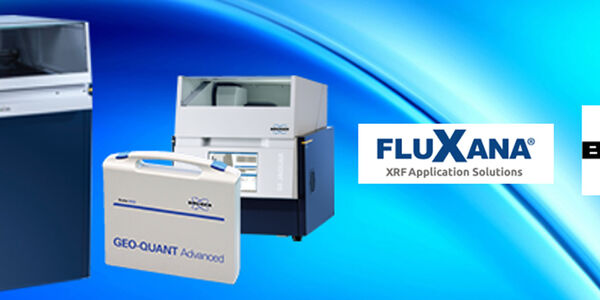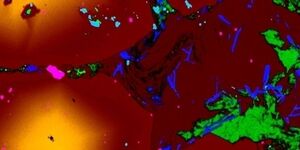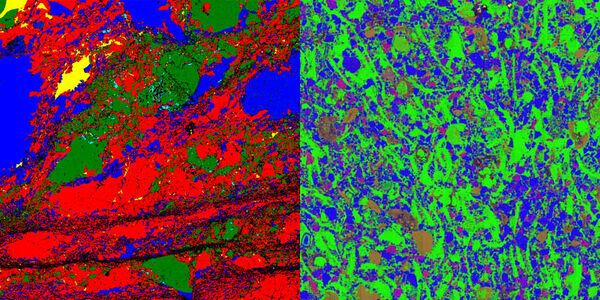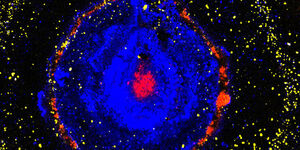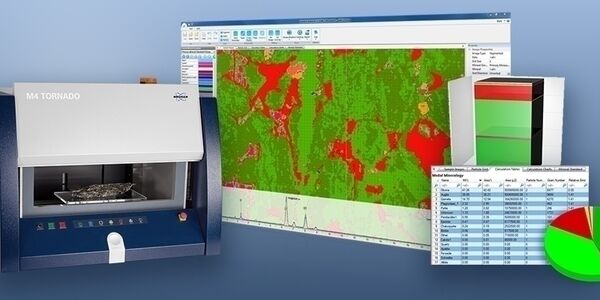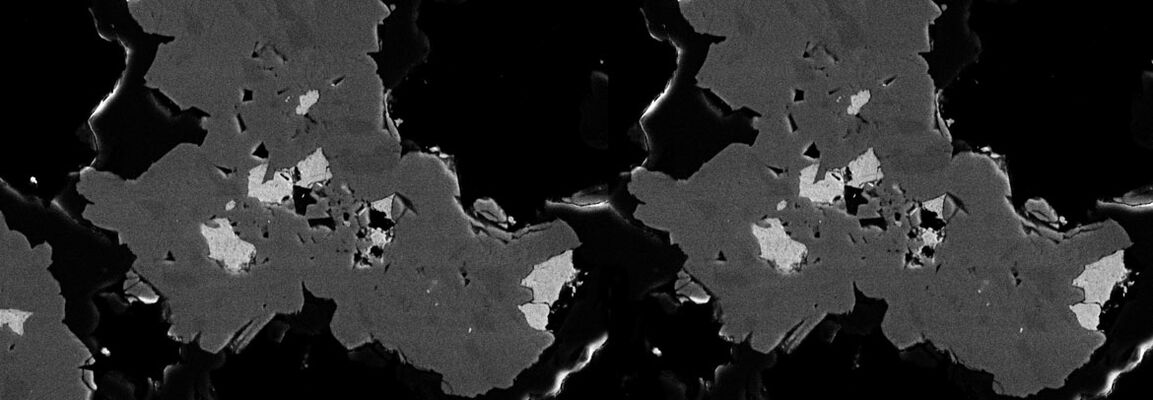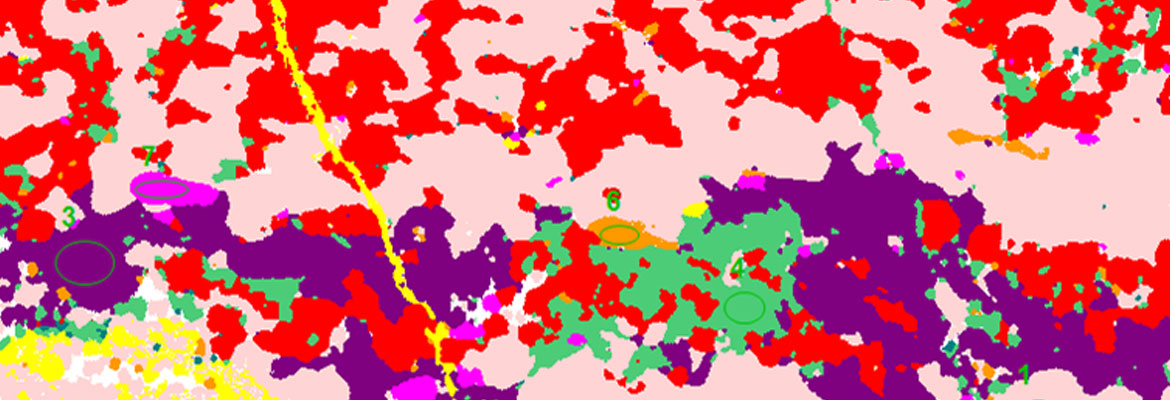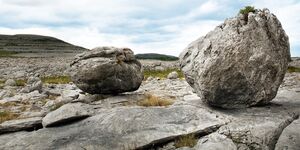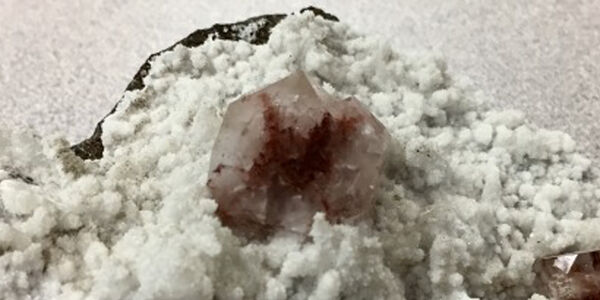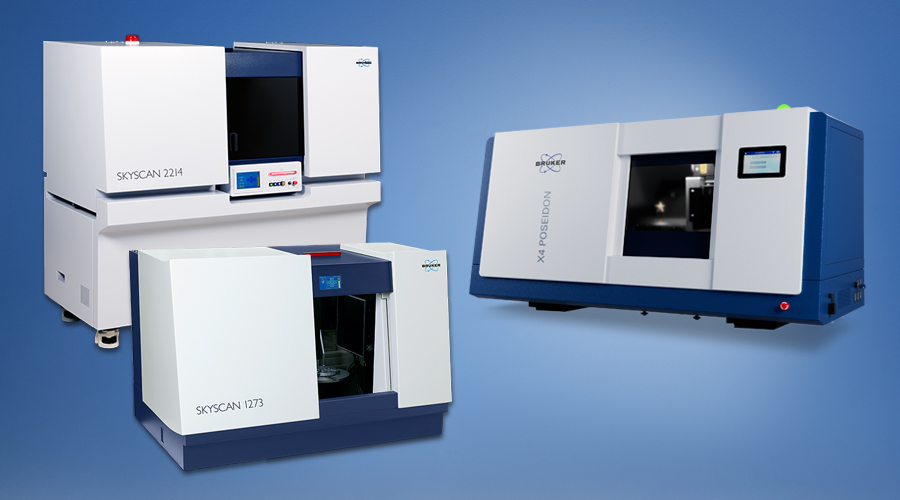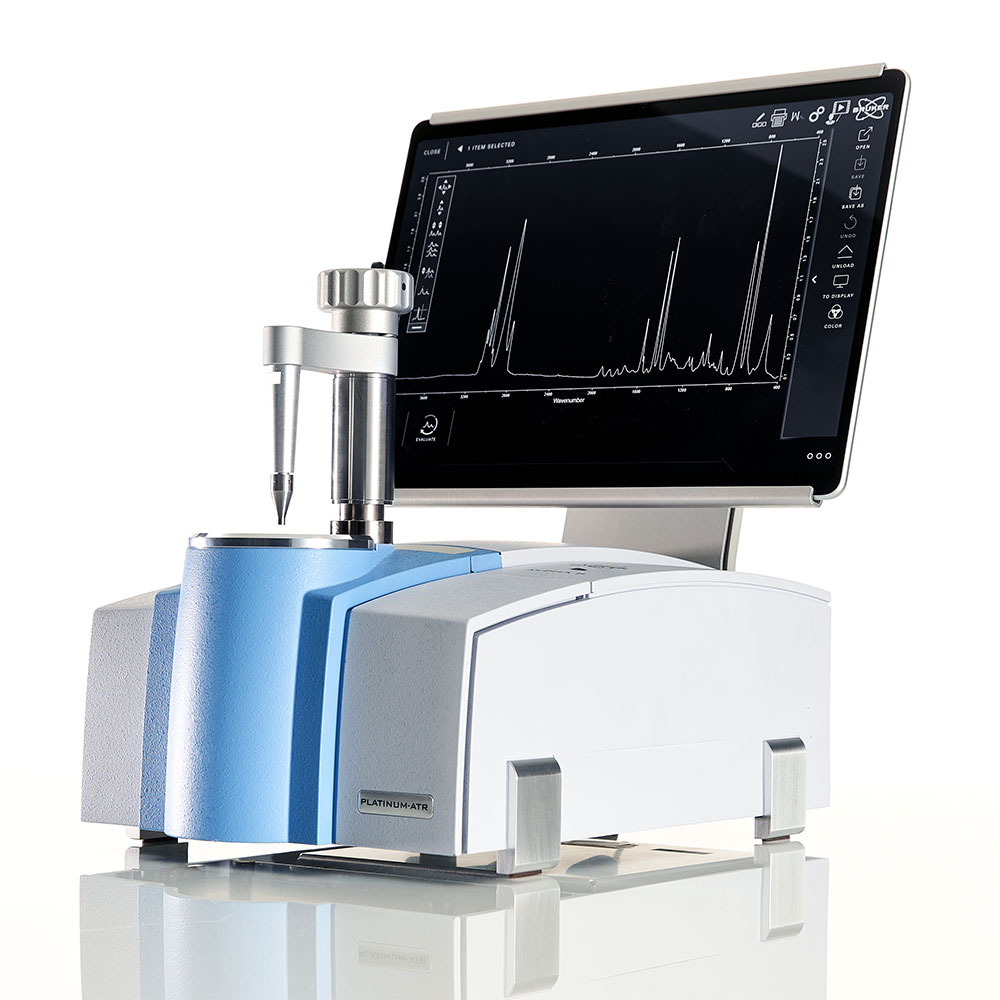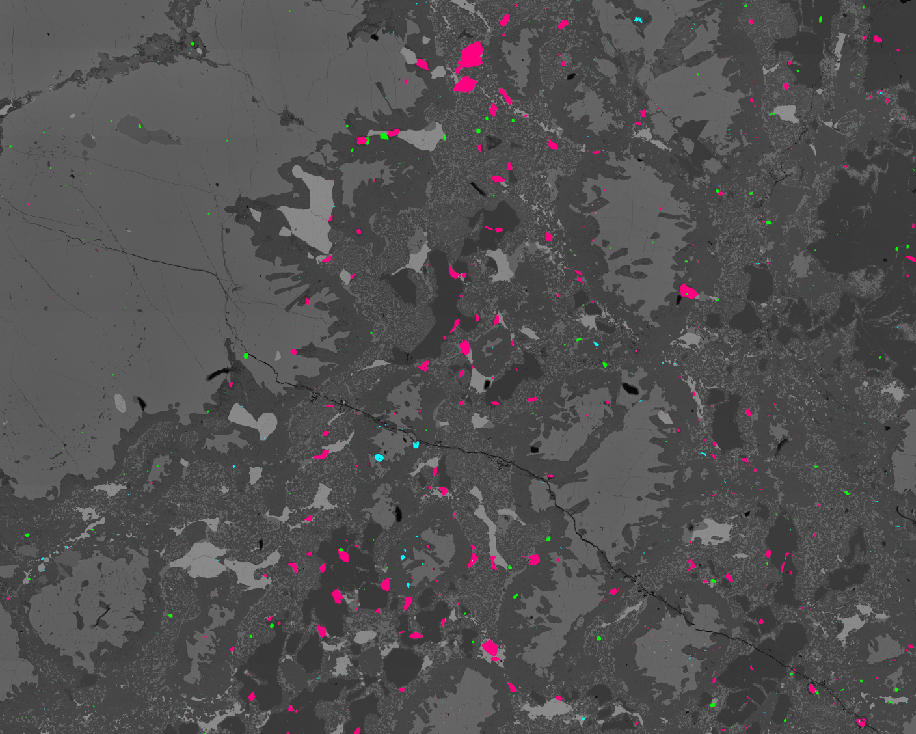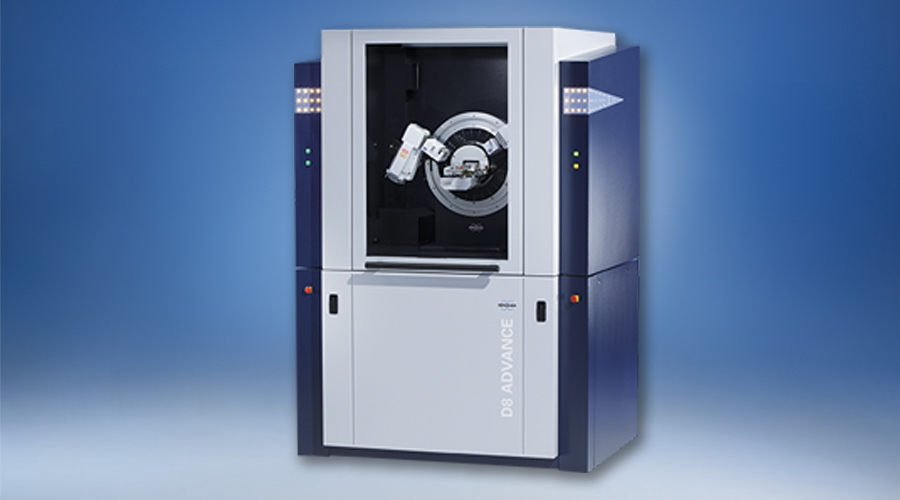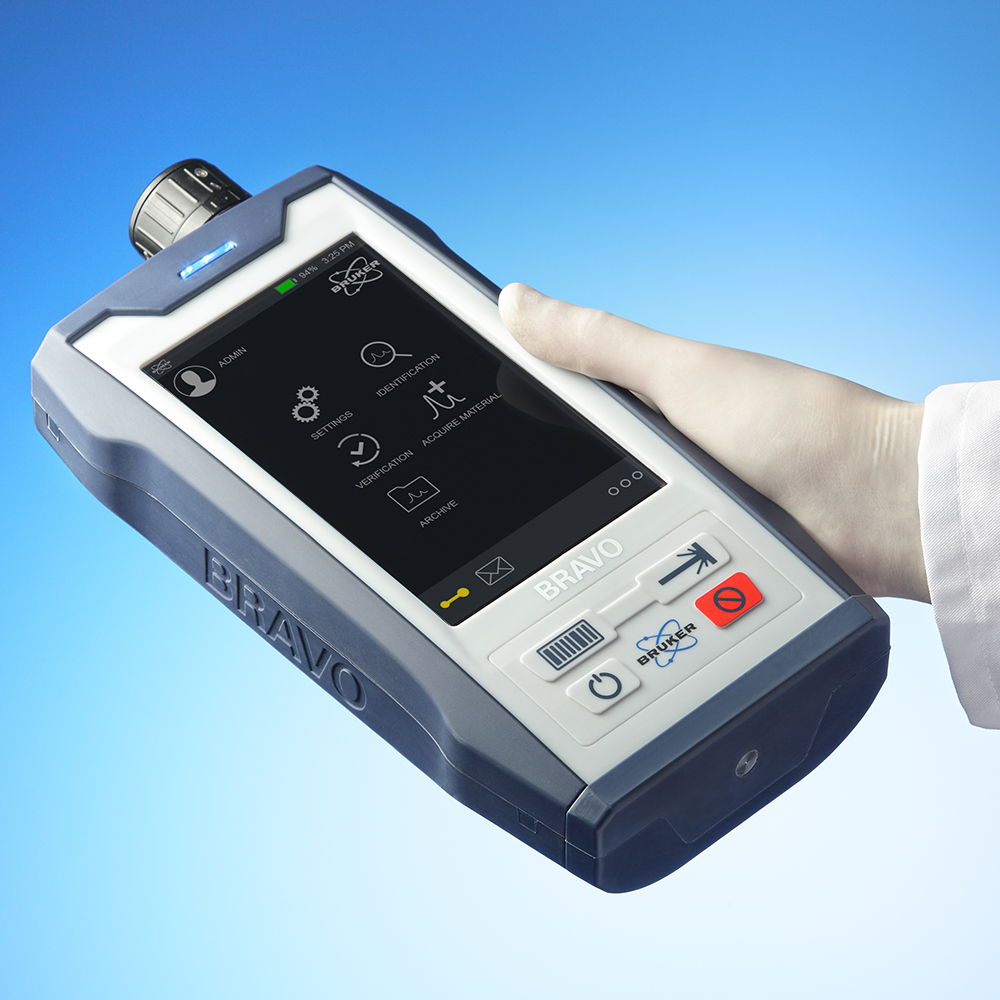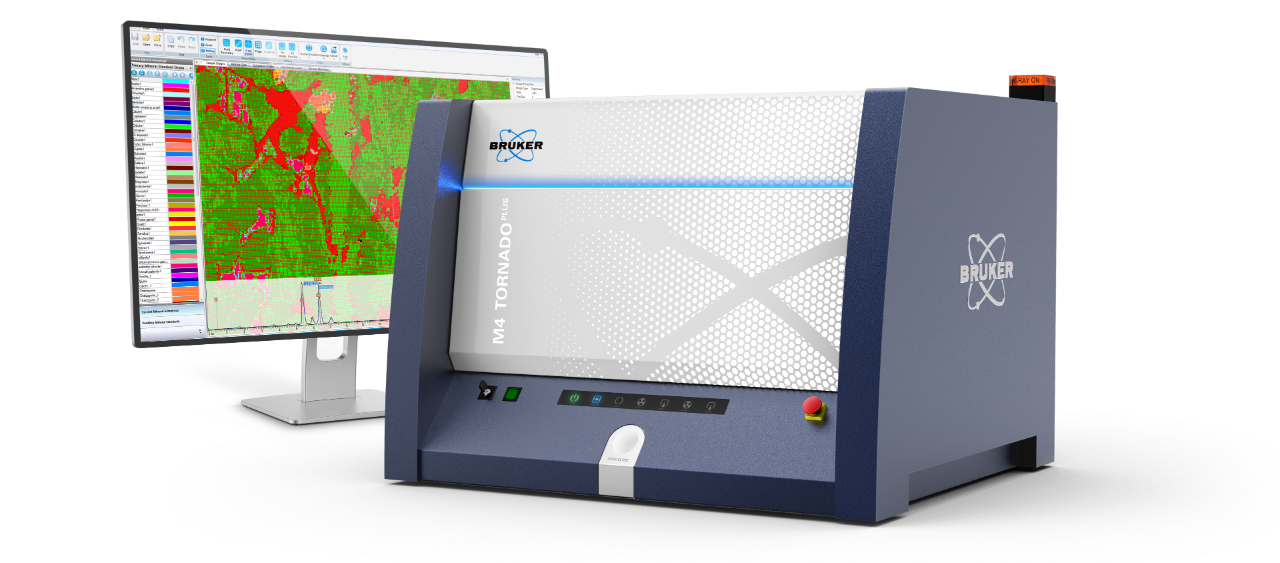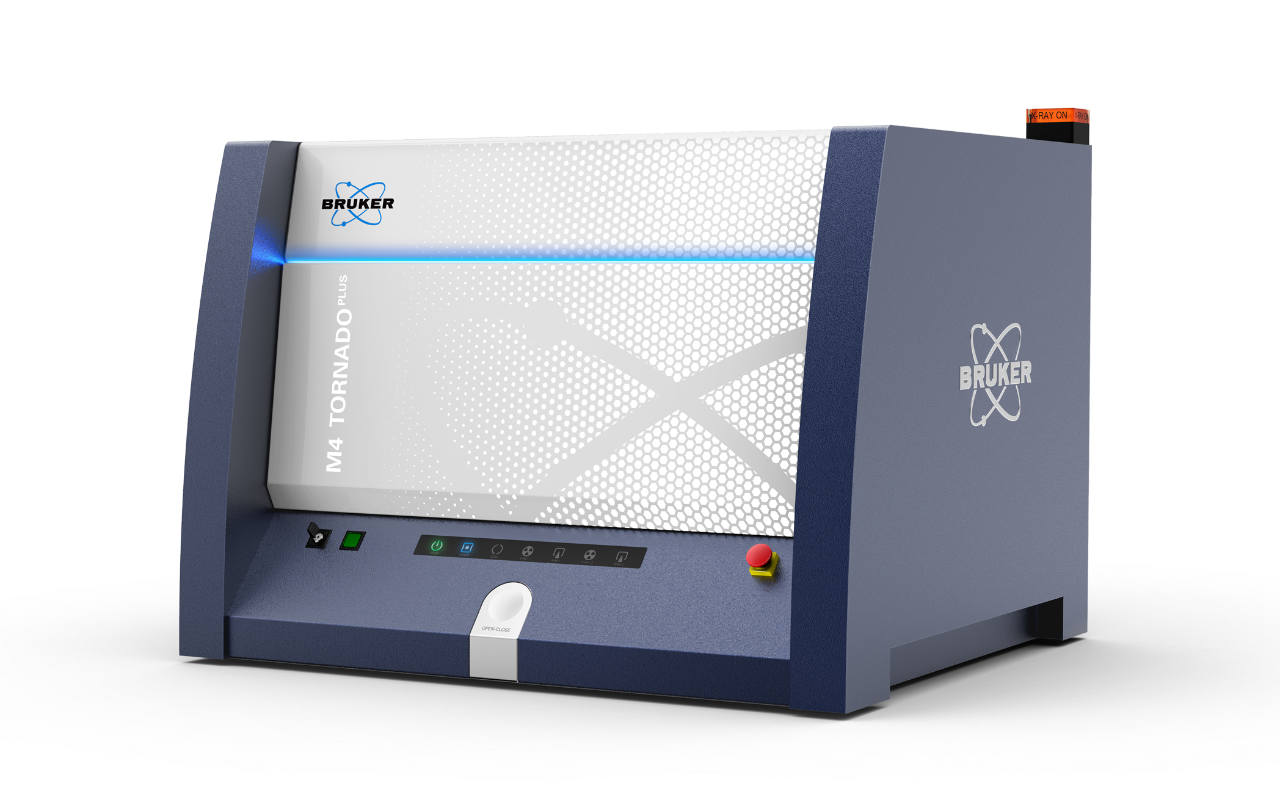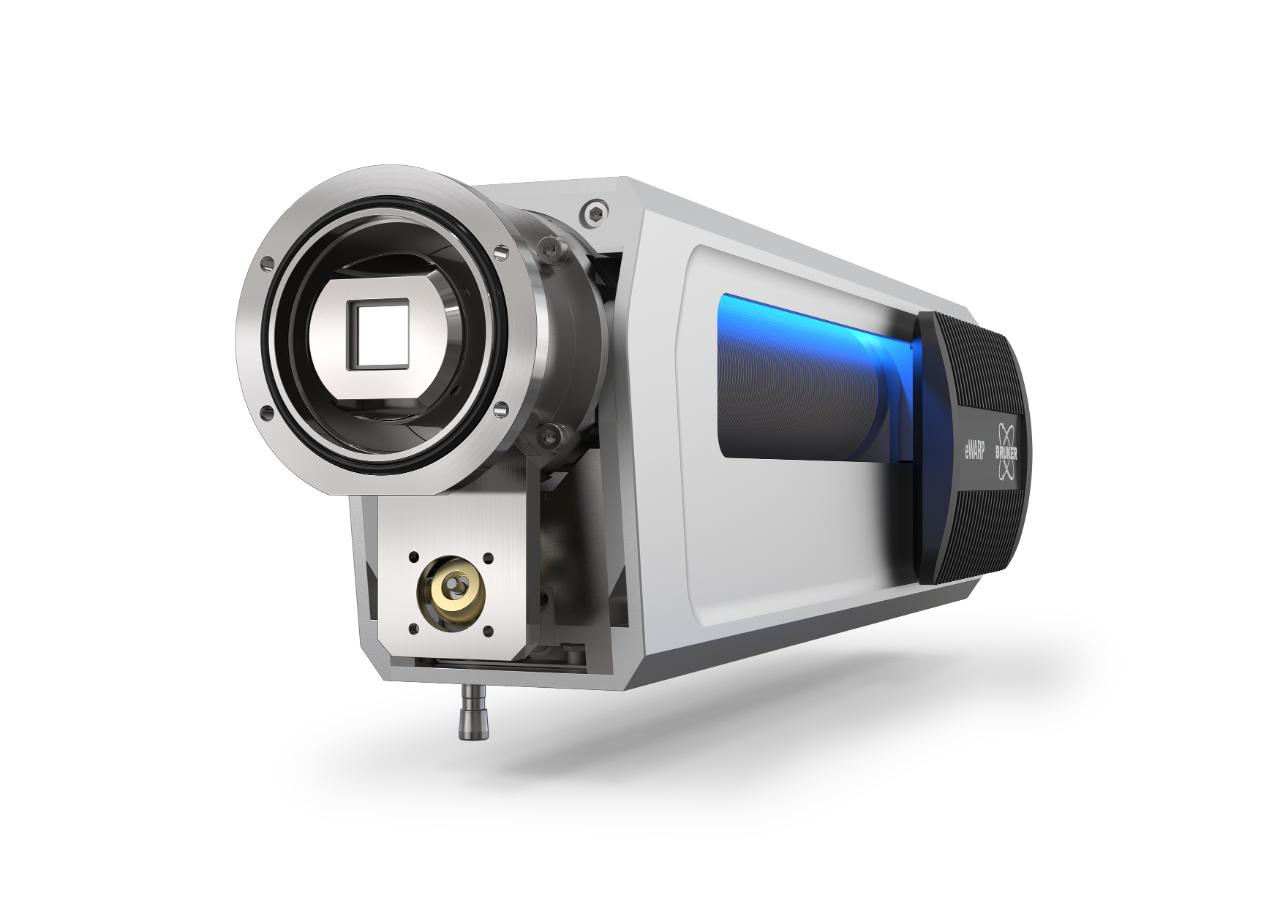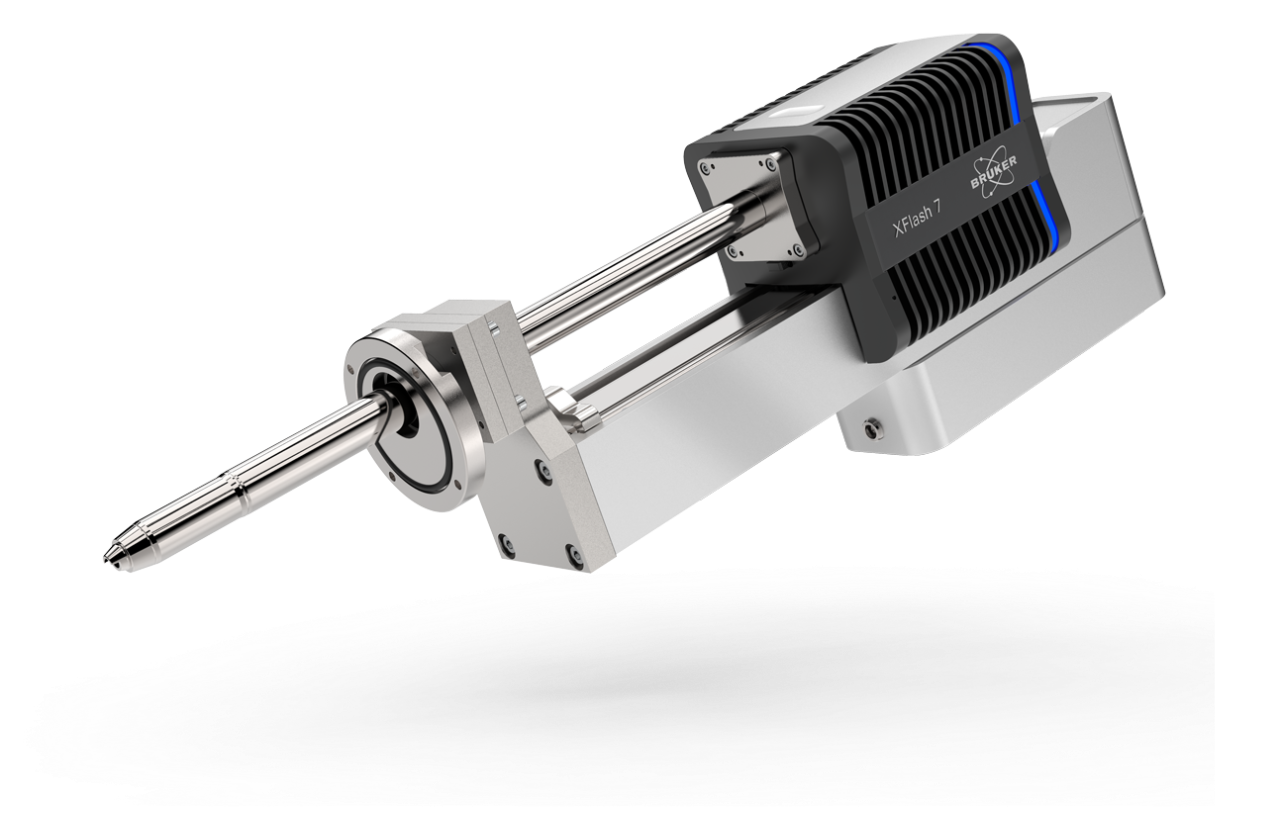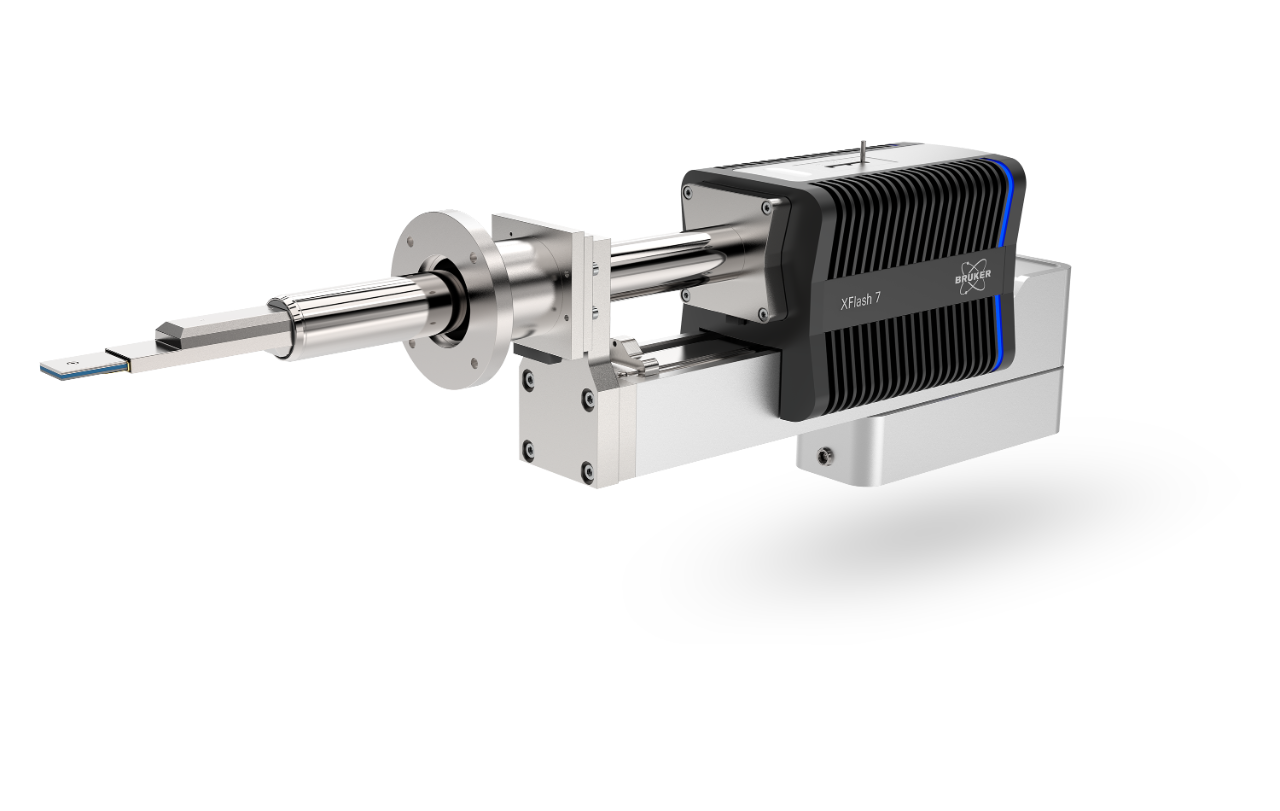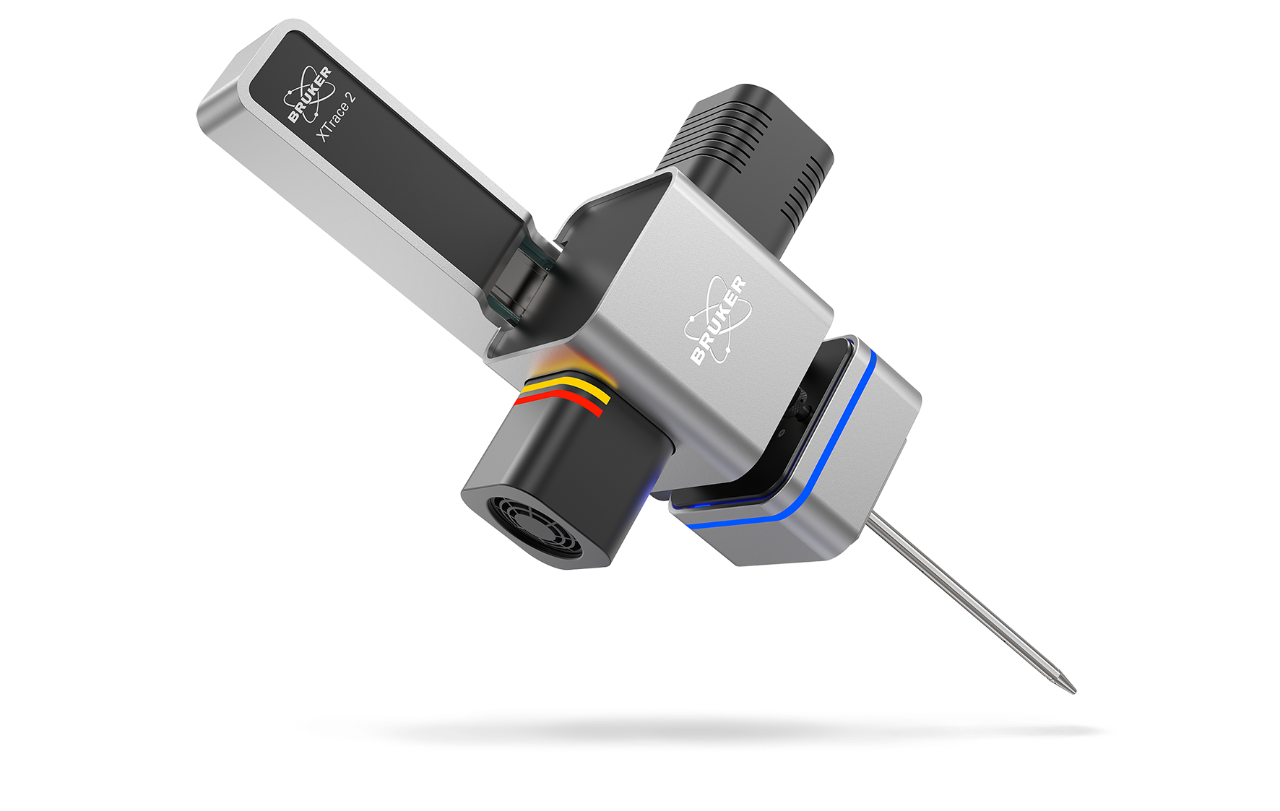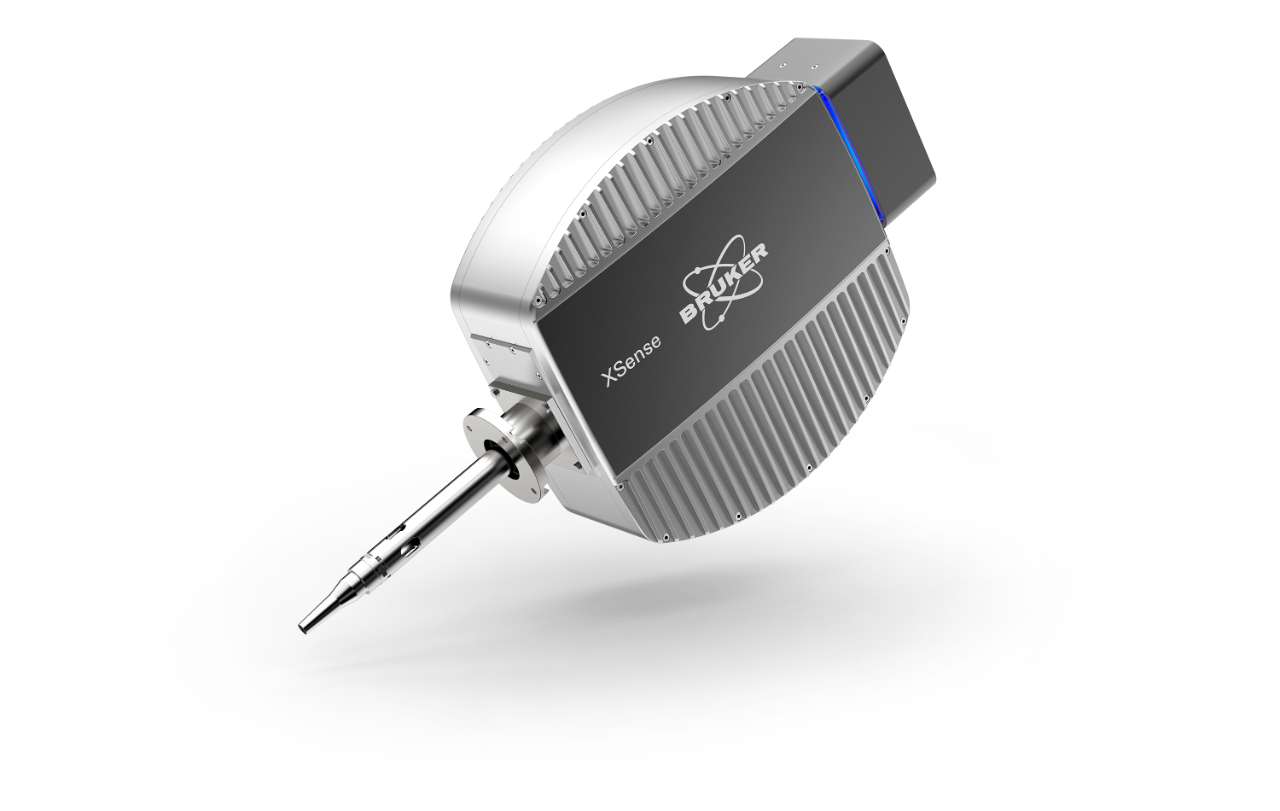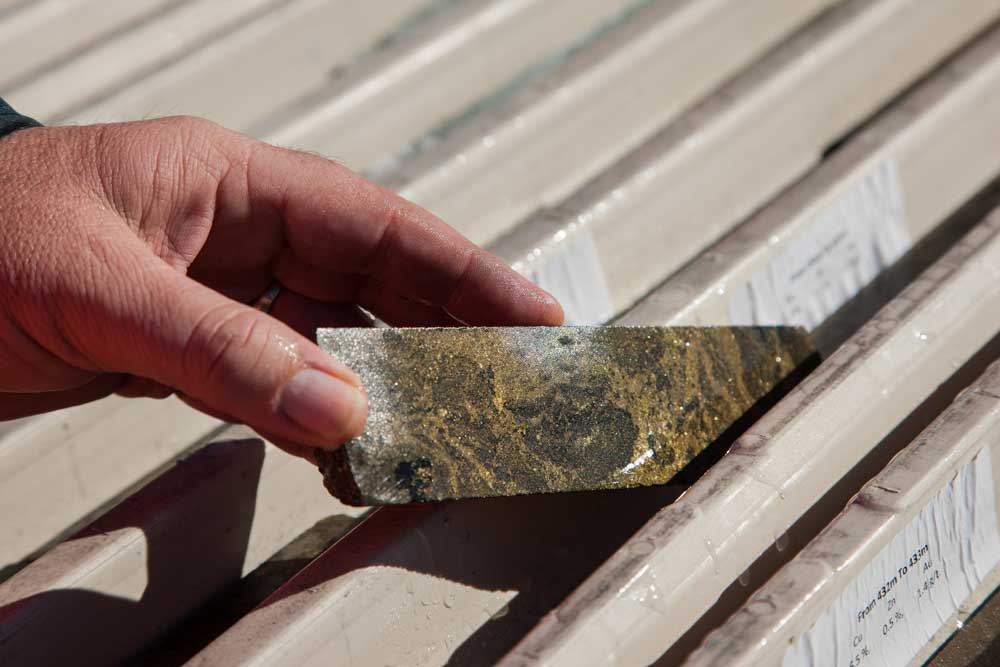

Rock Characterization for Mineral Exploration
AMICS Automated Mineralogy in Mineral Exploration
Objective mineral identification and quantification through characterization of tens to hundreds of samples is difficult with the hand lens or using a petrographic microscope. Automated mineralogy allows the repeatable collection of mineralogical information at the micron, thin section and hand sample scales, providing statistically robust data that includes mineral identification and modal abundance, particle and mineral grain size distributions, mineral texture data, and more. Bruker's automated mineralogy solution is AMICS. This software may be implemented as part of two complementary solutions of direct use in mineral exploration:
Automated Mineralogy for micro-XRF
M4 TORNADO AMICS implements Bruker's AMICS software directly on the M4 TORNADO and M4 TORNADO PLUS to allow rapid automated mineralogical scanning of minimally prepared samples that may be integrated directly with major and trace element geochemical maps. With the M4 TORNADO series of instruments being robust enough to be deployed to field offices and exploration camps, and requiring no specialist sample preparation equipment, this solution allows real time data feedback to support exploration targeting. Use M4 TORNADO AMICS to support:
- Lithotyping and alteration mapping directly on drill core to enhance deposit models and validate interpretations made by visual or geochemical logging tools
- Accurate identification and characterization of fine-grained ore and alteration minerals
- Selection of samples for more expensive characterization techniques such as SEM-EDS mapping or SEM-based automated mineralogy
- Pre-screening of samples for use in prospectivity and fertility workflows (e.g., RIMS), including analysis of stream sediment, soil or till samples without the need for exhaustive sample preparation.
Automated Mineralogy for Scanning Electron Microscope
Where mineral relationships are needed at scales below that resolved by micro-XRF, AMICS for SEM provides the solution for mineral and rock characterization. Use SEM AMICS:
- To quantify abundances of fine-grained alteration and ore minerals to build accurate deposit models
- As a fundamental part of your RIMS or alteration footprint programs for local and regional vectoring and targeting
- Characterization of mineral deportment aiding an evolving understanding of the target orebody to feed decisions on deposit feasibility, future mill design, and even environmental management of waste and tailings.
Integrate seamlessly with micro-XRF based geochemical and mineral characterization.
Micro-XRF for Rock Characterization in Mineral Exploration
Modern explorationists are presented with a myriad of tools to aid targeting, detection and characterization of new ore deposits. Fundamental to the exploration process is robust characterization of rocks – hand samples taken from outcrops, drill chips generated through RC drilling methods, or diamond drill core. While skillful geologists may accurately identify minerals in hand sample and create robust logs that guide sampling for geochemistry and construction of deposit models, new and evolving technologies are providing rapid and repeatable methods for rock characterization.
Micro-XRF scanning provides rapid visualization of major and trace element geochemistry at the hand-specimen and thin section scale, on minimally prepared samples. Bruker's M4 TORNADO series of micro-XRF instruments are rugged, allowing deployment to field sites or offices, and do not require specialist lab personnel to operate or reduce data. Use the M4 TORNADO or M4 TORNADO PLUS to enable:
rapid scanning of rough cut drill core or trays of drill chips to produce major, minor and trace element geochemical maps
quickly evaluate ore and alteration mineralogy and confirm visual logs and direct ongoing logging strategies
verify hyperspectral or other logging technology data by providing direct geochemical data at comparable scales
use geochemical maps to calculate whole rock compositions for entire samples or subdomains within scans for lithotyping and calculation of alteration indices
build data sets rapidly to provide more accurate vectoring during drilling programs, and feed deposit models for regional exploration programs.
Spatial Characterization at a Micron Scale - Elemental Mapping with SEM EDS
During different stages of exploration needs arise for more detailed investigations of samples that may be beyond field or forward-deployed lab solutions. Micron-scale rock and mineral characterization is commonly needed to understand complex paragenetic relationships, shedding light on the mineralizing processes and event sequences that can be used to build more comprehensive deposit models to guide ongoing exploration.
Rock and mineral characterization driven by SEM-based EDS solutions provide:
Detailed textural and timing relationships between important ore and gangue minerals
Compositional zoning in ore-related minerals to define ore deposition events
More focused compositional analysis of fine-grained alteration products, to validate other field geochemical techniques and providing confidence in exploration models
Bulk Rock Compositional Analysis with XRF
Bulk compositional analysis is key to mineral exploration, with fast elemental screening empowering surveyors to make smart decisions on where to drill and which samples to analyze further.
Immediate, on-site screening of bulk rock samples can be performed using Bruker's TRACER 5 handheld XRF spectrometer. This approach is particularly valuable during early exploration stages when mapping geochemical anomalies and assessing mineralized zones without waiting for laboratory turnaround. Additionally, on-site analysis with the TRACER 5 also helps reduce sample transport costs by facilitating selective sampling based on preliminary results.
For more detailed characterization the S2 PUMA, a benchtop WD-XRF spectrometer, delivers highly precise compositional analysis including major, minor, and trace elements from carbon to americium. The S2 PUMA is well suited for comprehensive exploratory studies and resource evaluation.
Raman and FT-IR Raman and FT-IR Spectroscopy in Mineral Exploration
Adding to the arsenal of characterization techniques available in the mineral explorationist's toolkit, FTIR and Raman spectroscopy build on elemental scanning techniques to provide addition mineral chemical and structural information. Infrared and Raman spectroscopy allow accurate identification of minerals where elemental signatures are similar but their crystal structures are not. Applications include:
distinguishing specific species of alteration products such as clay, oxide or sulfate minerals, which are important for understanding alteration facies and locations in hypergene, supergene or oxide zones.
Presence of organic materials that can be important exploration indicators in some deposit environments
In-Situ Study of Lazulite from Graves Mountain, Georgia, USA
The traditional bulk mineralogy approach is to reduce the sample to a homogenous powder and analyze with a divergent beam (Bragg-Brentano) geometry. Grinding is not always a practical option, due to rarity of a given specimen or the desire to characterize the spatial relationship of multiple phases within an assemblage. Microanalysis techniques offer the ability to analyze the sample in its native state, easing analysis of the individual constituents.
Publications Related to Rock Characterization
- 2020 - Economic Geology: (Open Access) Quantitative Mineral Mapping of Drill Core Surfaces I: A Method for µXRF Mineral Calculation and Mapping of Hydrothermally Altered, Fine-Grained Sedimentary Rocks from a Carlin-Type Gold Deposit
- 2020 - Precambrian Research: Multistage gold mineralization events in the Archean Tati greenstone Belt, northeast Botswana: Constraints from integrative white mica Ar/Ar, garnet U-Pb and sulfides Pb/Pb geochronology
- 2019 - Economic Geology: Plundering Carlow Castle: First look at a unique mesoarchean-hosted Cu-Co-Au deposit
- 2019 - ASEG Extended Abstracts: (Open Access) Application of micro-XRF to characterise diamond drill-core from lithium-caesium-tantalum pegmatites
- 2019 - Minerals: (Open Access) The Distribution of Precious Metals in High-Grade Banded Quartz Veins from Low-Sulfidation Epithermal Deposits: Constraints from µXRF Mapping
- 2019 - China Geology: (Open Access) A new type U-Th-REE-Nb mineralization related to albitite: A case study from the Chachaxiangka deposit in the northeastern Qaidam Basin of China
